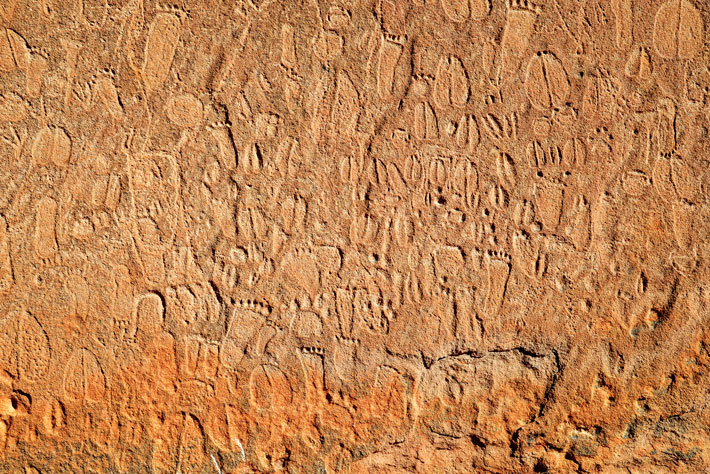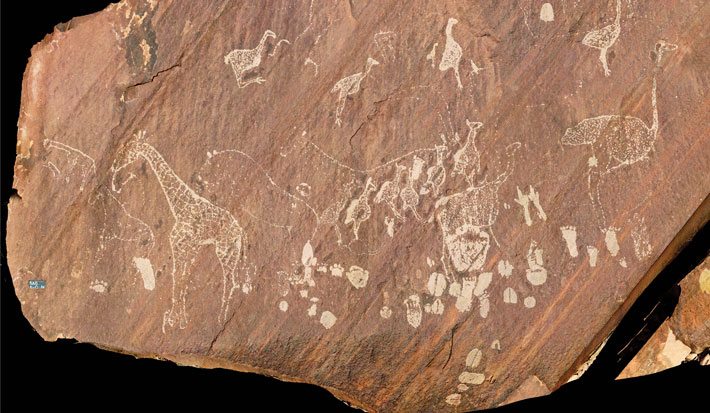Three Indigenous tracking experts from the Juhoansi group of the San people have worked with archaeologists in western Namibia to analyze recently discovered rock art dating to the first millennium B.C. The images were carved by hunter-gatherers and depict animals in profile as well as hundreds of animal tracks and human footprints. Archaeologist Andreas Pastoors of the University of Erlangen-Nuremberg and the trackers studied some 500 of these rock engravings in the Doro! Nawas Mountains.

They found that many of the engravings of tracks depict giraffe prints. Others represent a rich diversity of species, including big cats, rhinos, bushpigs, and elephants, as well as less dangerous species such as rabbits and monkeys. “We were surprised to find that the number of species whose tracks were depicted was greater than the number of animals depicted in the profile view,” says Pastoors. “It’s remarkable that the spectrum is so wide.” The trackers were even able to distinguish between images of tracks belonging to animals of different age and sex, such as young male bushpigs and older female leopards.






